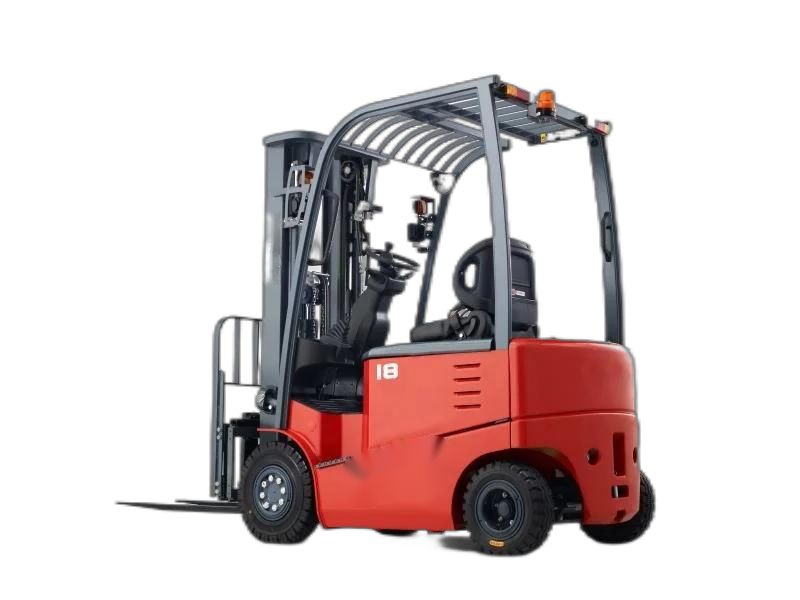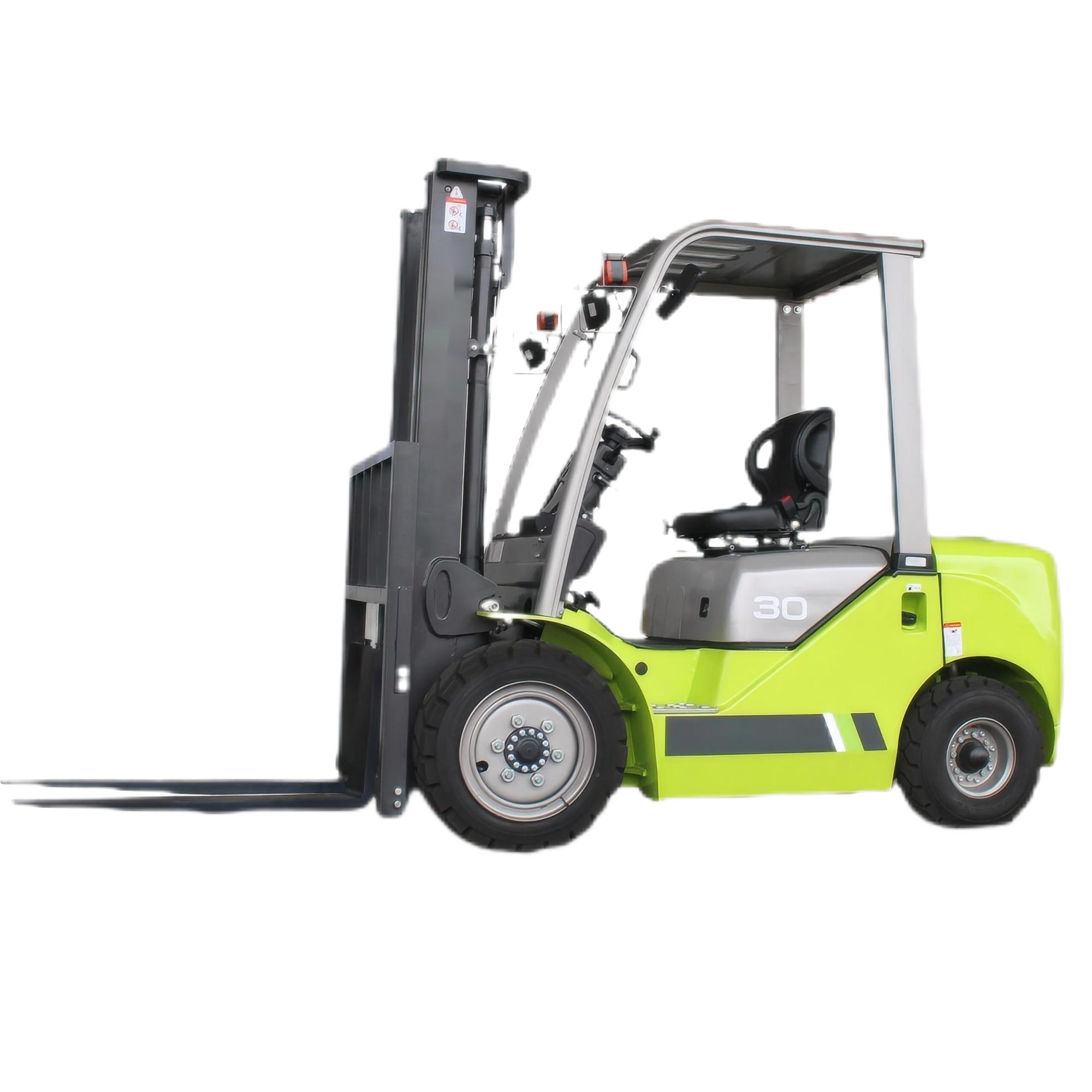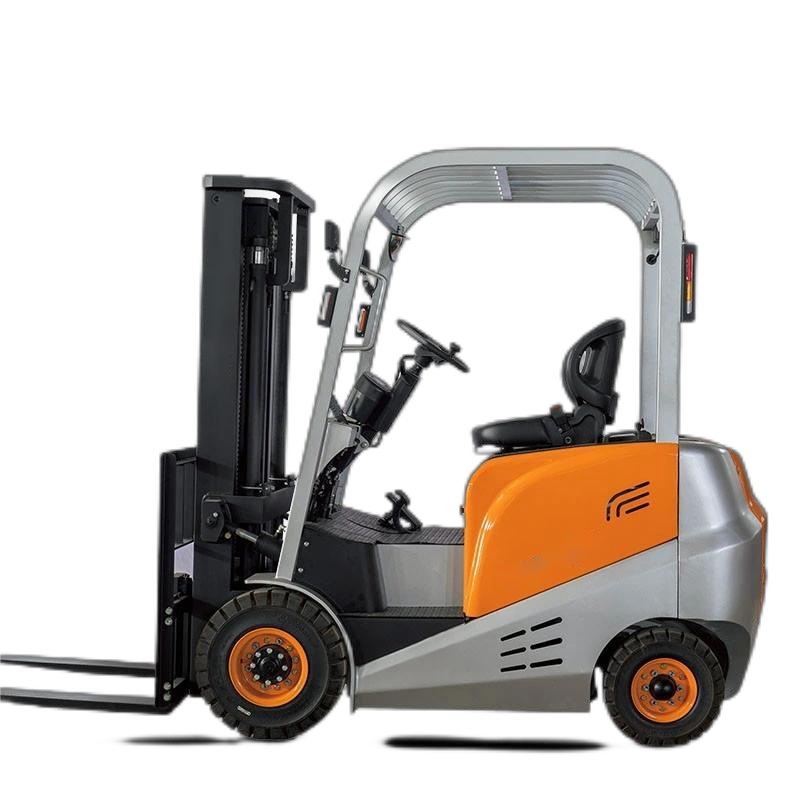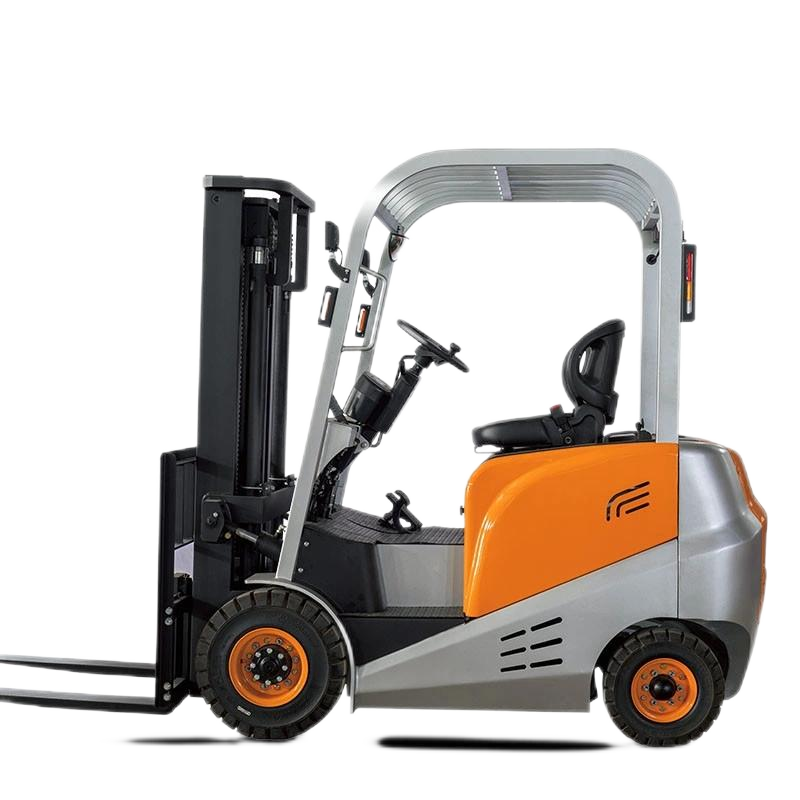The following is some information about the 2-ton electric forklift:
Features
Environmental protection and energy conservation: Similar to the 1.5-ton electric forklift, it uses electricity as the power source, with zero exhaust emissions, which is friendly to the environment. Moreover, the cost of electricity is lower than that of fuel, and the long-term use can reduce the operating cost.
Low noise: The noise generated during operation is relatively low, which is conducive to creating a quiet working environment. It is suitable for use in places with strict noise requirements, such as indoor warehouses, logistics distribution centers, etc.
Low maintenance cost: With a simple structure, it does not have complex internal combustion engines and related transmission components, reducing the failure points. Daily maintenance mainly focuses on the battery, motor, and electronic control system, reducing the maintenance workload and cost.
Environmental protection and energy conservation: Similar to the 1.5-ton electric forklift, it uses electricity as the power source, with zero exhaust emissions, which is friendly to the environment. Moreover, the cost of electricity is lower than that of fuel, and the long-term use can reduce the operating cost.

Low noise: The noise generated during operation is relatively low, which is conducive to creating a quiet working environment. It is suitable for use in places with strict noise requirements, such as indoor warehouses, logistics distribution centers, etc.
Low maintenance cost: With a simple structure, it does not have complex internal combustion engines and related transmission components, reducing the failure points. Daily maintenance mainly focuses on the battery, motor, and electronic control system, reducing the maintenance workload and cost.
Main Types
Electric counterbalance forklift: Equipped with a counterweight block, it can maintain balance and stability when handling 2 tons of goods. It is suitable for the loading, unloading, handling, and stacking operations of various goods. It can travel in wide aisles and adapt to various working conditions, being one of the most common types of electric forklifts.
Electric reach truck: The mast can move back and forth, with a small turning radius and high space utilization rate. It is suitable for operating in narrow warehouse aisles, and can efficiently carry out the access and stacking of goods. The lifting height is usually relatively high, which can meet the requirements of different shelf heights.
Electric stacker: Focusing on the stacking and loading/unloading of goods, it has a compact structure and flexible operation. There are operation modes such as stand-on type and walk-behind type. It can complete the vertical lifting and horizontal handling of 2 tons of goods in a limited space, and is often used for the stacking of goods and shelf replenishment in places such as warehouses and supermarkets.
Electric counterbalance forklift: Equipped with a counterweight block, it can maintain balance and stability when handling 2 tons of goods. It is suitable for the loading, unloading, handling, and stacking operations of various goods. It can travel in wide aisles and adapt to various working conditions, being one of the most common types of electric forklifts.
Electric reach truck: The mast can move back and forth, with a small turning radius and high space utilization rate. It is suitable for operating in narrow warehouse aisles, and can efficiently carry out the access and stacking of goods. The lifting height is usually relatively high, which can meet the requirements of different shelf heights.
Electric stacker: Focusing on the stacking and loading/unloading of goods, it has a compact structure and flexible operation. There are operation modes such as stand-on type and walk-behind type. It can complete the vertical lifting and horizontal handling of 2 tons of goods in a limited space, and is often used for the stacking of goods and shelf replenishment in places such as warehouses and supermarkets.
Performance Parameters
Rated load: 2000kg, which is the maximum weight of goods that the forklift can safely lift and handle under the standard load center distance.
Load center distance: Generally, it is 500mm or 600mm, which may vary among different manufacturers and models. It refers to the distance from the center of gravity of the goods to the vertical surface of the forklift forks, and has an important impact on the stability and load-bearing capacity of the forklift.
Lifting height: Common lifting heights are 3 meters, 5 meters, etc. Special customized ones can reach higher heights to meet the requirements of different warehouse shelf heights and operation needs.
Traveling speed: The traveling speed under full load is generally about 5 - 12km/h, and the traveling speed under no load is about 6 - 13km/h. The specific speed depends on factors such as the forklift model, motor power, and controller settings.
Lifting speed: The lifting speed under full load is usually between 0.1 - 0.2m/s, and the lifting speed under no load is slightly faster, generally about 0.15 - 0.25m/s. The lifting speed affects the efficiency of goods loading, unloading, and stacking.
Rated load: 2000kg, which is the maximum weight of goods that the forklift can safely lift and handle under the standard load center distance.
Load center distance: Generally, it is 500mm or 600mm, which may vary among different manufacturers and models. It refers to the distance from the center of gravity of the goods to the vertical surface of the forklift forks, and has an important impact on the stability and load-bearing capacity of the forklift.
Lifting height: Common lifting heights are 3 meters, 5 meters, etc. Special customized ones can reach higher heights to meet the requirements of different warehouse shelf heights and operation needs.
Traveling speed: The traveling speed under full load is generally about 5 - 12km/h, and the traveling speed under no load is about 6 - 13km/h. The specific speed depends on factors such as the forklift model, motor power, and controller settings.
Lifting speed: The lifting speed under full load is usually between 0.1 - 0.2m/s, and the lifting speed under no load is slightly faster, generally about 0.15 - 0.25m/s. The lifting speed affects the efficiency of goods loading, unloading, and stacking.








